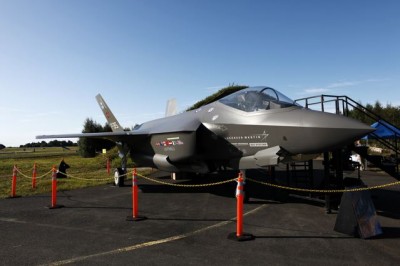Copyright The Financial Times Limited 2011.
Published: June 19 2011 16:19 | Last updated: June 19 2011 16:19
Since the start of 2011, though, Lockheed had adopted a more positive tone, arguing that efforts to reshape what is the Pentagon’s largest procurement project were finally paying off in better test results and improved performance.
But in recent weeks the company has come under pressure over a new issue. A fresh estimate of the total life cycle costs – the money required to operate and sustain the aircraft – has triggered a wave of angst among politicians and Pentagon officials.
According to the latest report on the F-35 programme prepared by the Pentagon, maintaining the fleet of jets through their entire working lives will cost more than $1,000bn, a number that several influential congressmen have described as “jaw-dropping” and “unsustainable”.
“If we live the estimates, we cannot afford to pay that much,” Ashton Carter, the Pentagon’s top procurement official, told a senate hearing in May, adding that “our objective is to make sure that those estimates do not come true”.
Vice-Admiral David Venlet, who manages the F-35 for the Department of Defence, has said that his unit will prioritise refining and reducing estimated sustainment costs in 2011 – in the same way it focused on fixing the development and manufacturing plans for the jet in 2010.
All of that could spell trouble for an aircraft that was pitched as a cost effective way to upgrade the US fleet. Lower maintenance and support costs were key to that goal as they regularly add up to 70 per cent of the total bill for owning a weapons system.
For years Lockheed insisted that the running costs of the aircraft would be less than equivalents such as the F-16. But those numbers have fallen by the wayside. The Pentagon now expects the F-35 to cost about 33 per cent more than the F-16s it aims to replace.
Lockheed has pushed back against those numbers, describing them as “sensationalised”. Executives point out that the $1,000bn figure is based on operating 2,443 aircraft over 52 years, from more than 50 bases and include adjustments for inflation and fuel costs.
“It is a big model that has come up with a big number,” Bob Stevens, chief executive of Lockheed, said in May. “But when you come up with a big number like that … there are sufficiently large opportunities to reduce that number by making streamlining decisions along the way.
“How much do the spares cost? How many aircraft are you buying? How many spares are you buying? How many bases are going to operate it? What is the staffing at the bases? Is the staffing … government – or contractor – supported? And really, on and on.”
For Lockheed Martin, the stakes are high. The F-35 is its single largest programme and will be the key driver of its revenues and profits over the next 30 years.
Still, Lockheed says that it will not be able to produce its own counter-estimates until about 2015, when it has collected about 200,000 flight hours worth of data, which will feed into “more realistic” assumptions.
In the meantime patience is wearing thin. Buying the F-35 was supposed to cost $233bn, or an average of $69m each, with delivery to the services starting in 2008. But cost estimates have soared to about $385bn, or $133m each, and the service entry date remains unclear.
Earlier in the year the Pentagon announced a new plan for the combat jet, adding extra funding and test aircraft to the development phase, slowing the speed at which production ramps up and placing one variant on “probation”.
Bill Sweetman, editor in chief for Defense Technology International, who has followed the F-35 for years, argues that whatever the eventual total, if sustainment costs do not come down it could spell trouble for the programme.
“These sorts of figures make the service chiefs go weak at the knees because they will have to reduce numbers to stay within budget, as there is no more money,” says Mr Sweetman. But if numbers are cut then costs per aircraft will inevitably spiral.
“People are waking up. This isn’t just another defence acquisition,” he says. “The $1,000bn dollar figure is an indicator that you have a spent a fortune and there are a lot of sunk costs but that is not that much compared to what you will pay.”
Senator John McCain concurs. “In my view, the program is now at a watershed moment,” he said in May. “With austere defence budgets for as far as the eye can see, the [F-35] programme must show now it can deliver [F-35] aircraft as needed on time and on budget.”
Both Congress and the Pentagon have limited options. “There are not good alternatives to the [F-35] for either our services or our international partners,” Mr Carter said bluntly last month. “We looked … We want the aeroplane.”

